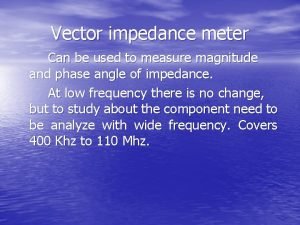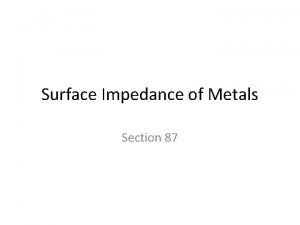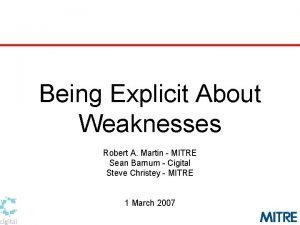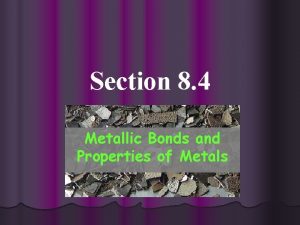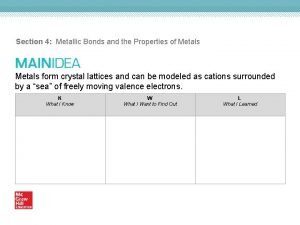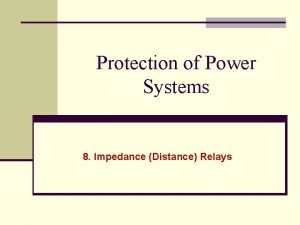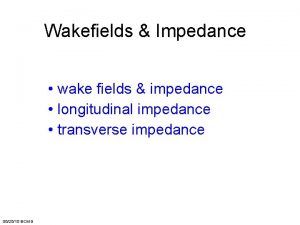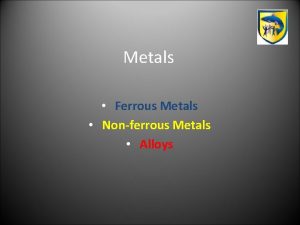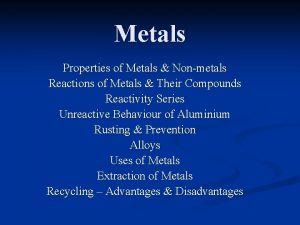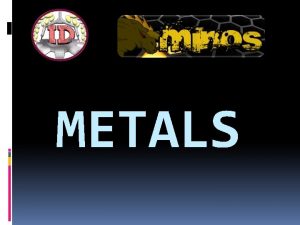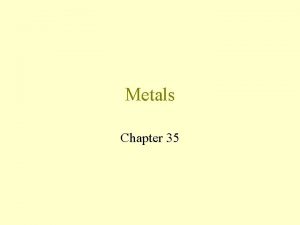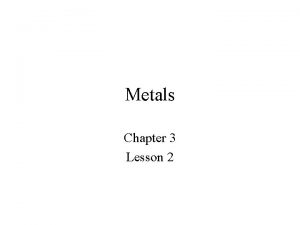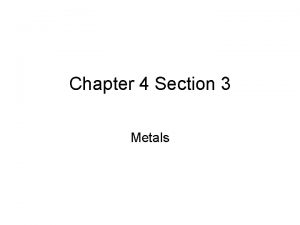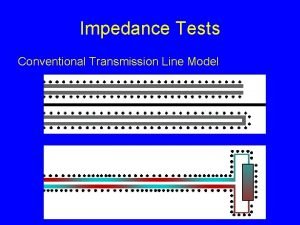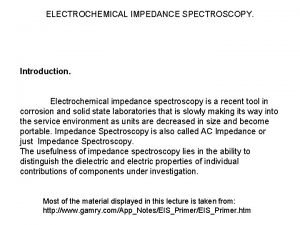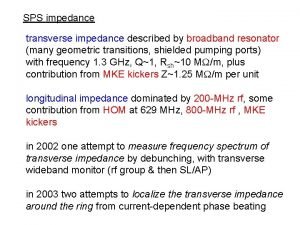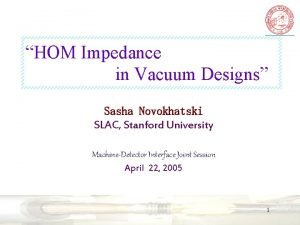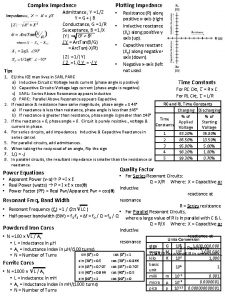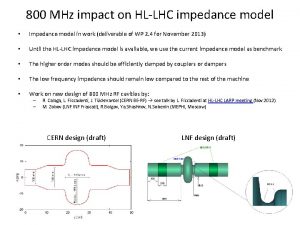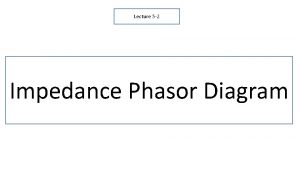Surface Impedance of Metals Section 87 E cwe

























- Slides: 25

Surface Impedance of Metals Section 87




E = -(c/we) k x H where k = Ö(em)w/c Inside and near a metal surface

Since Et and Ht are continuous at the surface, they are related by the same expression just outside

Surface impedance At low w

Time averaged energy flux through the metal surface

As frequency increases, penetration depth decreases until it becomes comparable to the electron mean free path. • The field is then too non-uniform to use the macroscopic description based on e. • Fields don’t satisfy the macroscopic Maxwell equations in the metal This is the only possible linear relation between the axial vector H and the polar vector E.

As frequency increases further, electron energy becomes high

At high frequency, the distance traveled by conduction electrons during one electromagnetic wave period Then we can neglect the spatial inhomogeneity of the field relative to the electron motion

If holds and if m is real (no magnetic dispersion) while e is complex (significant dispersion) Then the condition e” > 0 requires z’z” < 0, And since z’ >0, we must have z” < 0. On the other hand, if m is complex and e is real, then z” > 0.

Proof of first inequality

For superconductors, the penetration depth d is very small even for DC fields w = 0. For small w, the distribution of the H-field is the same as in the static case. (59. 2) Defines d Boundary condition For a superconductor. Pure Imaginary. No loss.

Surface impedance has dispersion. Consider complex z to be a function of a complex frequency w. Surface impedance integral operator Et depends on values of Ht at previous times. This means that z(w) must be regular in the upper half plane of complex w. z(w) is regular on the real w axis except at w = 0. If Ht is real, then Et must be real: z(-w*) = z*(w)

Energy dissipation is determined by z’ These properties give Kramers-Kronig relations between z’ and z”

A use of surface impedance is to calculate reflection from metals. For perpendicular polarization

Boundary condition superposition

z is small for metals


Parallel polarization




 Vector impedance meter
Vector impedance meter Define sast
Define sast Cwe-120
Cwe-120 Cwe-116
Cwe-116 Cwe mitre
Cwe mitre Cwe mitre
Cwe mitre Mitre common weakness enumeration
Mitre common weakness enumeration Metals on periodic table
Metals on periodic table Ferrous metals vs non ferrous metals
Ferrous metals vs non ferrous metals Metal characteristics
Metal characteristics Natural science grade 6 mixtures
Natural science grade 6 mixtures Natural science grade 7 term 2 notes pdf
Natural science grade 7 term 2 notes pdf Non metal example
Non metal example The two rows of elements that seem to be disconnected
The two rows of elements that seem to be disconnected Section 4 metallic bonds and the properties of metals
Section 4 metallic bonds and the properties of metals Section 4 metallic bonds and the properties of metals
Section 4 metallic bonds and the properties of metals Metallic bonding
Metallic bonding Chapter 17 overview elements and their properties
Chapter 17 overview elements and their properties Elements and their properties section 1 metals
Elements and their properties section 1 metals How to find lateral area
How to find lateral area Spin coat
Spin coat Curved surface area and total surface area of cone
Curved surface area and total surface area of cone List of static series compensators
List of static series compensators Y connected generator
Y connected generator Rc series circuit diagram
Rc series circuit diagram Impedance relay
Impedance relay
